| 1 | Common lancehead |
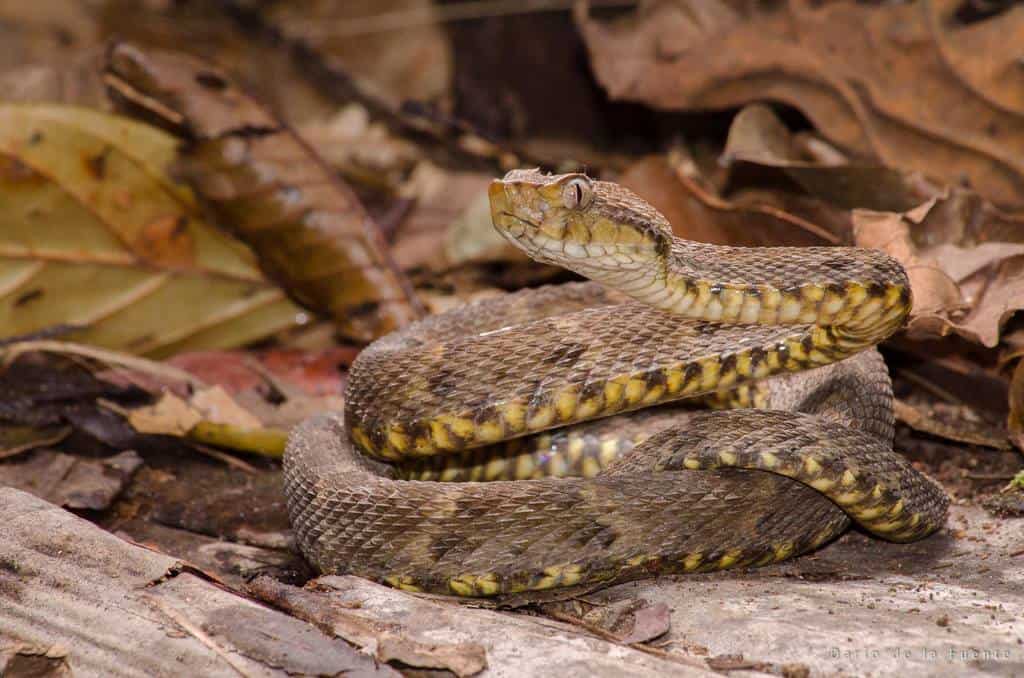
One of Brazil’s most common snakes, and coincidentally one of the deadliest. Common lanceheads are creatures of forests, and bushy villages on their outskirts. Being unable to survive in areas without vegetation cover, you’ll never find them in open plains, unlike a boa constrictor. Common lanceheads are notorious for invading rodent-infested farmland adjacent to rainforests, lured in to catch a meal.
Common lanceheads (bothrops atrox) average at 75-125cm. They have golden eyes and a black tongue, and the venom that spews from their mouths is truly deadly. They specialise in haemorrhages, and symptoms include bleeding, bruising, swelling, nausea, vomiting, followed by kidney failure. There’s no unusual or bizarre symptoms, just utter destruction. Another possible cause of death is a stroke. Common lanceheads are aggressive, rarely backing down from a fight. Their venom yield is very high at up to 344mg.
In some Amazon regions, common lanceheads cause over 50% of snakebites, even up to 90%. Most bites happen on bushy farmland which they lurk on, but common lanceheads are also spotted on forest trails at night, minding their own business. This is usually a nocturnal snake.
| 2 | Painted coralsnake |
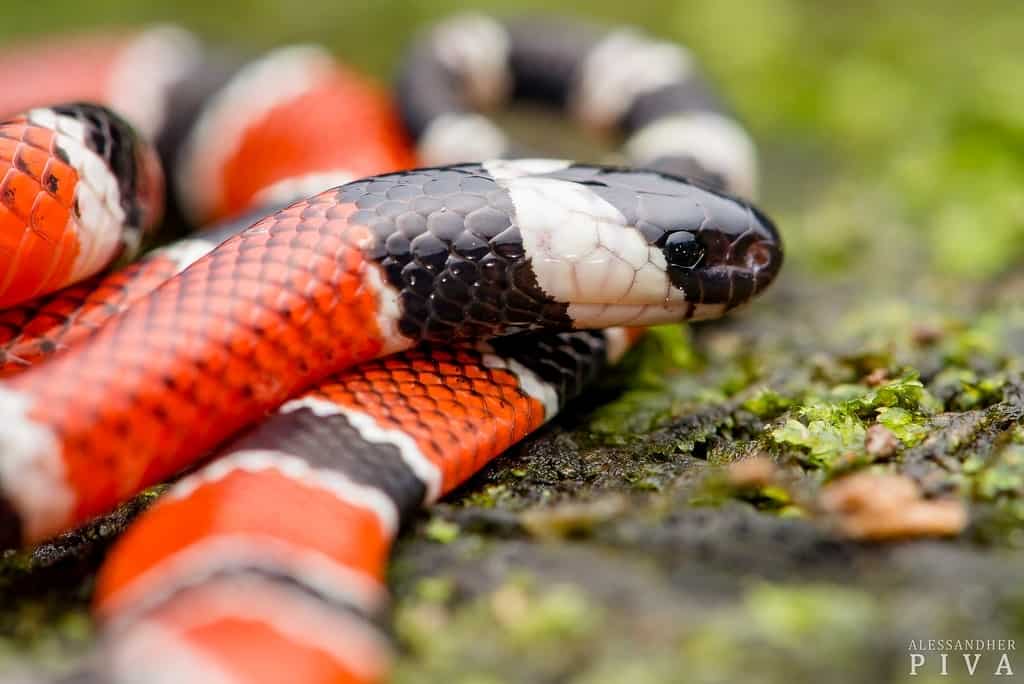
The coral snake family causes 1% of snakebites in Brazil, and the worst individual species is the painted coralsnake (Micrurus corallinus). In one study on 194 coral snake bites in Brazil, this coral snake caused 36 while the southern coralsnake (micrurus frontalis) caused 12.
The painted coralsnake lives in southern Brazil and along the east coast, including the outskirts of Sao Paulo. It sticks to forests, often resting on top of branches and rocks. It doesn’t hiss loudly when humans approach, nor charge in a blind rage, but locals often mistake them for harmless snakes and pick them up, and that’s when they feel fangs sinking in. Like other coral snakes, Micrurus corallinus has a neurotoxic venom; paralysis, dropping eyelids and muscle weakness are classic symptoms.
However, this snake has the unusual symptoms of robbing your sense of taste, which lasted for 3-4 weeks in two patients. It also causes a “myasthenic snarl”. The venom disrupts the nerves of your face, cheeks and eyes, so that when you attempt to smile, you only get 30% of the way there and you’re left with a vicious crocodile expression. Micrurus corallinus averages at 65-85cm, and 52% of its diet is other snakes.
| 3 | Micrurus frontalis |
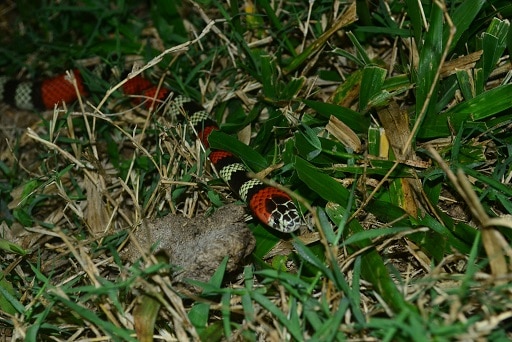
In Florida, a simple way to dodge the eastern coral snake is “red touches black, venom lack”. However, this is Brazil, with a whole new set of rules. Micrurus frontalis lives in southern Brazil, Argentina and Paraguay and certainly has red touching black; it’s also the second bitiest coral snake in Brazil. Again, they never plan an attack, but the venom is packed with neurotoxins which begin with drooping eyelids, progress to pain and tingling (parathesia), and then severe muscle weakness. A study on guinea pigs found that the venom wreaks havoc on the heart.
This snake is different to Micrurus corallinus. The latter has presynaptic neurotoxins, which alter signals before they’re sent, whereas Micrurus frontalis has post-synaptic neurotoxins, blocking signals from arriving, in acetylcholine receptors in muscle cells. Consequently, certain anticholinesterase remedies can be used for m. frontalis which don’t work for the other.
When Brazil created its first coral snake antivenin in 1911, this was the species they used, by injecting the venom into horses and collecting the antibodies that appeared in response. Micrurus frontalis lives in forests, in the upper layer of soil mixed with leaf litter. These two coral snakes have a large overlap in southern Brazil, but the painted coralsnake stretches far further up Brazil’s east coast, while Micrurus frontalis extends slightly further south into Argentina.
| 4 | Crossed pitviper |
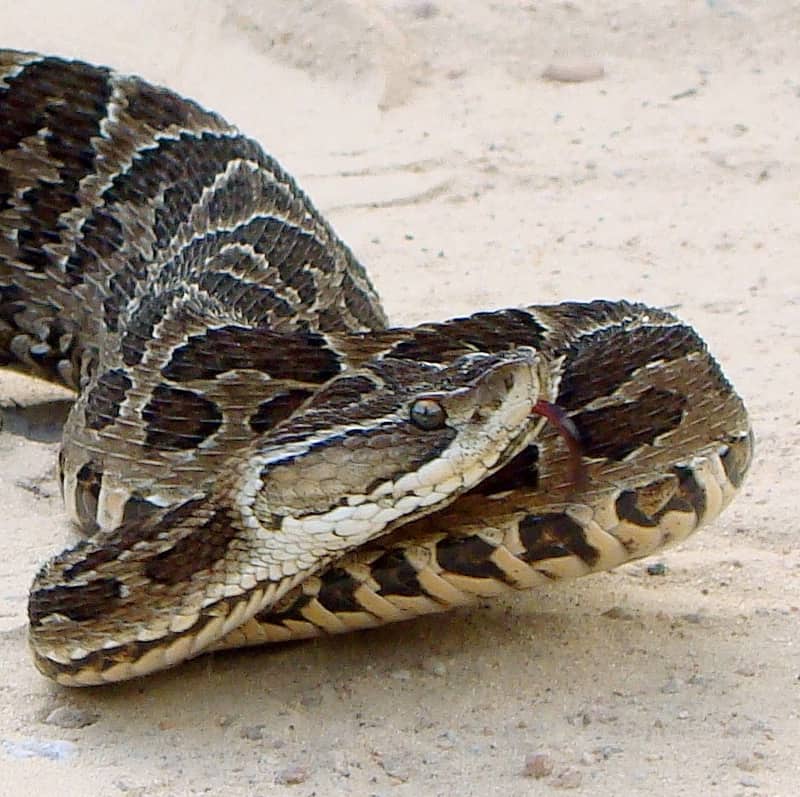
A common inhabitant of marshes, swamps, forest streams and other humid habitats. This snake rarely kills its victims, but unleashes destruction on the tissue surrounding the bite mark. Crossed pitviper (Bothrops alternatus) bites can rot the flesh so that the white bone beneath is exposed, cause limbs to turn gangrenous and require amputation. More common symptoms include painful swelling and blistering. One study found that 97% of victims had delayed blood clotting.
However, in the survey from 1902 to 1946, Bothrops alternatus caused 384 snakebites of a total 6601 in Brazil, yet only 8 were fatal. This viper doesn’t usually doesn’t end your life, but can change your life. A recent death was a 44 year old woman in 2004, who was bitten and suffered a brain bleed.
Crossed pitvipers are also common in sugar plantations, and stay away from dry habitats. They rarely climb trees, and they primarily live in southern Brazil, crossing into Uruguay, Paraguay and Argentina.
Crossed pitvipers are hunted themselves too, by burrowing owls, which carry them off and then rip pieces of flesh off their body. This snake lives in a brutal world, whether they’re dealing the brutality or experiencing it.
| 5 | Jararacussu |
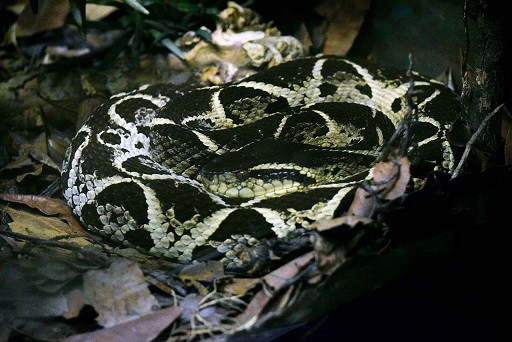
This large snake is dreaded by Brazilian villagers. Instead of the Amazon, the jararacussu is a citizen of Brazil’s Atlantic forest further east, plus Paraguay, Bolivia and northern Argentina. It prefers dense forests over wide, open plains, particularly forest with high canopy cover, where only moderate sunlight can penetrate. They stick to the ground rather than branches, and are sometimes seen along forest edges.
This brings the jararacussu into contact with villagers, who they will attack without thinking. Jararacussus can reach 2.2 metres, with fangs of 2.5cm. They’re an aggressive snake which will hiss, rear back and launch into savage assaults. From 1902 to 1946, Brazil had 6601 officially recorded snakebites, and 657 (9.95%) came from the jararacussu.
Another study examined 29 proven jararacussu bites from Sau Paolo hospitals. 3 patients died, at 18.75, 27.75 and 83 hours post bite. Jararacussus have a particularly huge venom yield, averaging at 247mg, and sometimes blasting through the 1000mg barrier. The venom has a particular tendency to cause necrosis, the rotting and sloughing off of formerly alive flesh.
| 6 | Bothrops bilineatus |
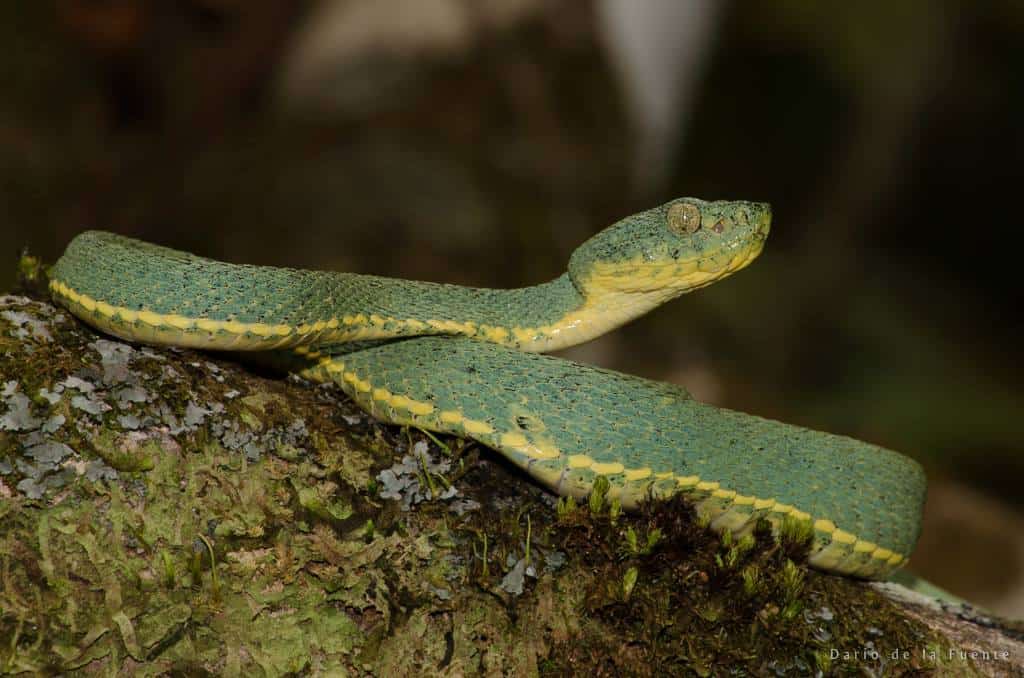
A widespread snake in Brazil, from the Amazon rainforest to the eastern Atlantic forest. This is another forest snake, but Bothrops bilineatus is a tree dweller, an ambush snake that waits patiently on branches for treefrogs or lizards. They blend into foliage using their extremely green scales, and have an extra long tail for skipping branches.
Yet despite this lazier lifestyle, it still manages to cause 3-36% of snakebites in certain Amazon regions. Its tree life means that it tends to bite unsuspecting victims on the head, chest and shoulders, as it drops down with fangs bared. American explorer William Beebe had a lucky escape when a Bothrops bilineatus bit from above and struck the rim of his hat.
On one hand, the LD50 rating of the venom is just moderate, at 6.28mg. On the other, this is a haemorrhagic venom that can be especially brutal. Victims often bleed spontaneously from the bite mark, eyes, nose, and gums. At least 1 death has been confirmed.
This venomous snake is often spotted in cocoa plantations. Two regions where it’s particularly common are southeastern Bahia and in Upper Juruá.
| 7 | Jararaca |
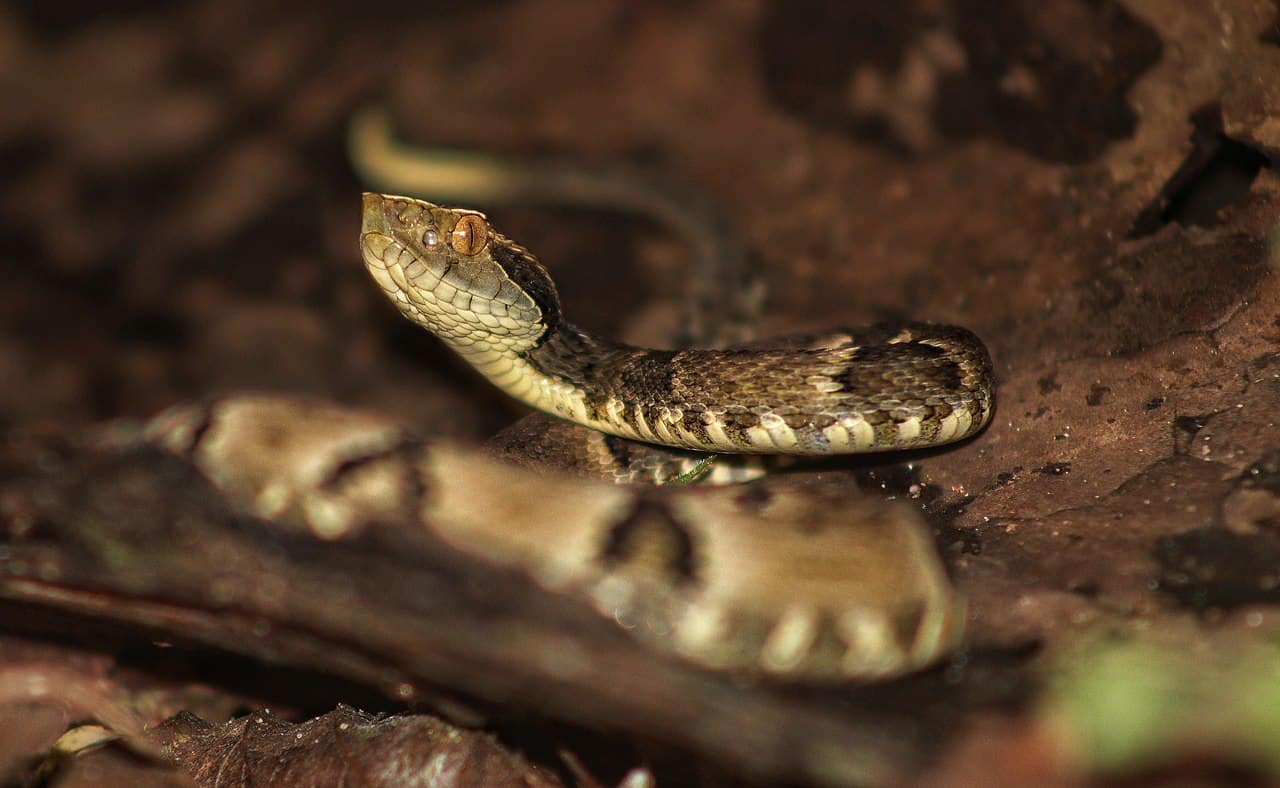
The jararaca is the best friend of heart patients all over the world. Since 1965, it has been used for lowering blood pressure, as a peptide within its venom was reverse engineered and turned into vein-relaxing ACE inhibitor medications. However, those living nearby aren’t so lucky.
This is a snake which comes alive during the wet season, feeding and breeding. During dry spells, they retreat further into their forests, becoming less active. It lives in southeast Brazil, particularly Sao Paulo, where it’s the third most common snake, with 16% of the total. In certain parks and preserves, it’s the most abundant snake, causing constant encounters with weekend revellers. Jararacas are a two sided coin. From 1902 to 1946, they caused 51% of known venomous snakebites in Brazil, 3446 out of 6601. But the mortality rate was low, at just 0.7%. The average venom yield is 25-35mg, while the fatal dose in an average human is 70mg. Nevertheless, a jararaca bite can cause swelling, bruising, blistering, and spontaneous bleeding of the gums.
Jararacas are more flexible than other Bothrops snakes. As well as forests, they can inhabit savannahs, thickets and agricultural land. Adults get 80% of their calories from rodents.
| 8 | South American rattlesnake |
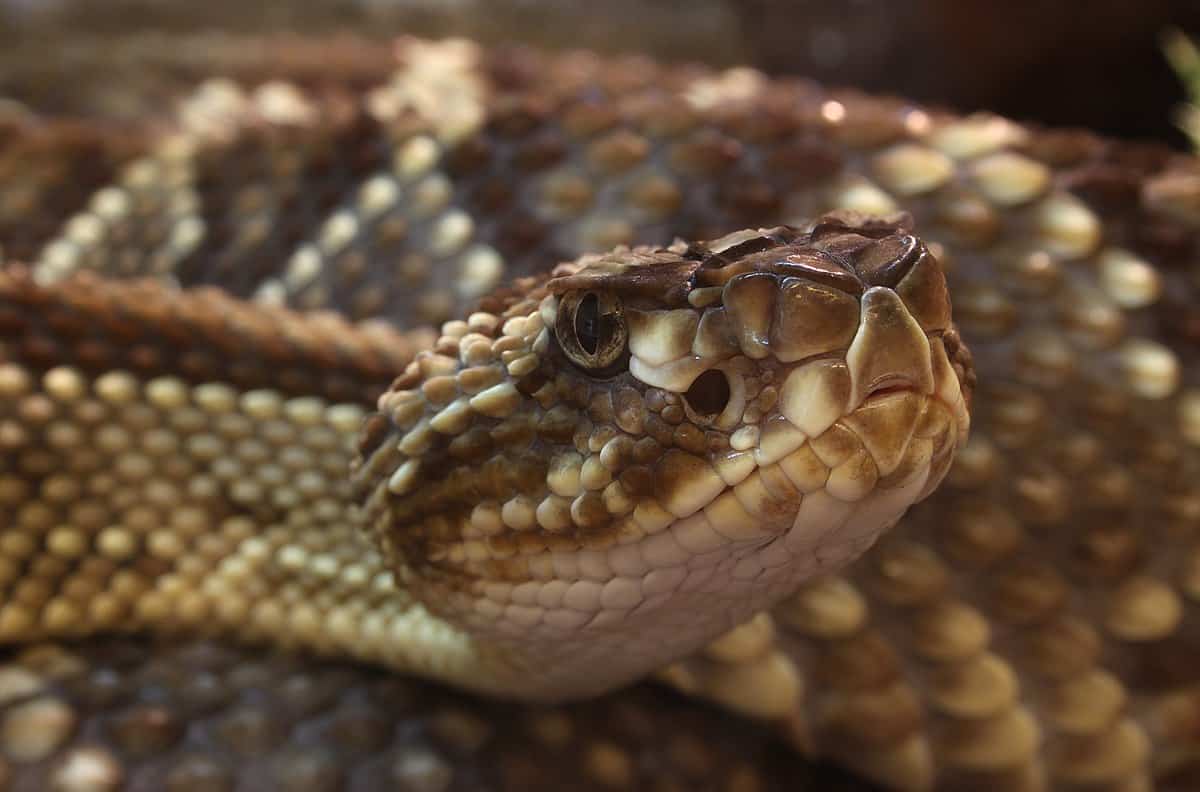
This is the only rattlesnake in South America. Yet despite the US having over 25 species, Crotalus durissus manages to have the second most toxic venom, behind the tiger rattlesnake. The latter has an LD50 rating of 0.06mg, while the South American rattlesnake scores 0.17mg.
This snake is a true horror. The redeeming feature is that they’re not particularly aggressive, and will probably slither by if you’re camped out having a picnic. But if they do get their fangs in, death is likely; the mortality rate is 72% without antivenin and 12% with.
Crotalus durissus is far more neurotoxic than US rattlesnakes. Thanks to the compounds crotoxin and crotamine, South American rattlesnakes unleash auditory disorders, speech difficulties, muscle weakness, and finally respiratory paralysis. The freakiest part is the victim’s neck, which becomes so limp that it looks broken. The venom can also damage the heart, cause hypotension, permanently blind victims – the list of horrifying symptoms never ends. Instead of jungles, this snake lives in open areas, including grasslands, shrublands, semi-arid areas, and savannahs.
Weirdly, Crotalus durissus has the power to block the hepatitis C virus. However, it’s probably best to seek other remedies.
| 9 | Brazillian lancehead |
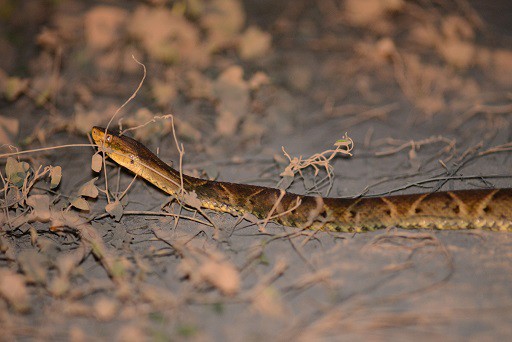
This species causes the most annual snake bites in Minas Gerais State, southeast Brazil. It also appears in Paraguay and Uruguay, and a tiny enclave in northern Argentina. Rather than dense jungles, this killer likes gallery forests – isolated forests along the edge of rivers, bordered on the other side by grasslands. Brazilian lanceheads are a common sight in the Cerrado savannah, and are particularly aggressive. This is a long snake at up to 2 metres, and while its venom rarely kills, it can cause lifechanging injuries.
In particular, this venom behaves differently in young snakes to adults. In juvenile Brazilian lanceheads, the venom primarily affects blood clotting, but as they age, the local, necrotic effects on the skin increase. The change happens from age 1 to 2, due to an increase in phospholipase A2 (PLA2) and metalloproteases. It’s a similar story with length, as those from 80-147cm caused far more local swelling, redness and necrosis in a 1989 study.
Like all of the snakes on the list, Bothrops moojeni is only found east of the Andes, a towering spinelike mountain range which blocks any snakes from crossing.
| 10 | South American bushmaster |
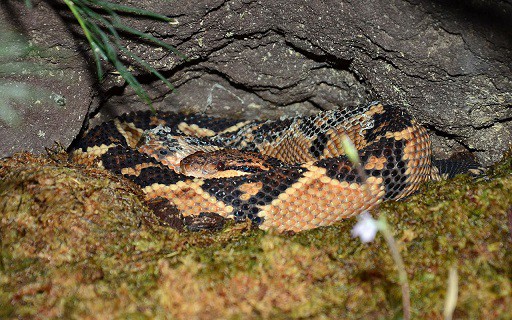
The longest viper species in the world, with a record of 3.65 metres, lachesis muta is also the longest venomous snake in the western hemisphere. This is a true rainforest snake, that compensates for its easy visibility by barely moving all day. The South American bushmaster does like to hide in bushes, where it waits in ambush for rodents (its main prey) to pounce on.
This snake matches its size with 2 inch fangs, and a huge venom total. The original estimate was 200-411mg, before being revised up to 500mg. South American bushmaster venom has every class of toxin going, including neurotoxins, haemotoxins and myotoxins. Only 1.4% of bites are fatal, but the deaths can be quick, occurring within 45 minutes. Symptoms include nausea, hypotension, and respiratory problems. South American bushmasters cause relatively few local symptoms. Blisters and bleeding are common, but necrosis is rarer, and so are the amputations that can result.
South American bushmasters are known to defend their eggs, a rare snake to do so. However, they generally have a calm temperament, and will only pounce on humans if they persist in agitating them. This lazy snake can survive on just 10 meals per year.